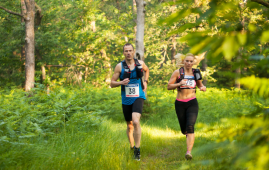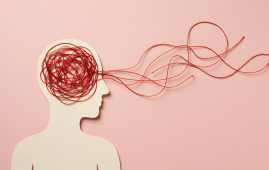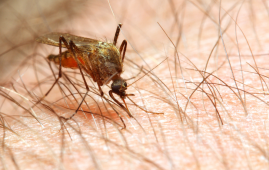

With the rise in outdoor activities over the summer, a cancer specialist at UT Southwestern Medical Center urges you to protect your skin from UV damage.
The sun’s UV radiation is the primary cause of skin cancer. While it is the most frequent type of cancer in the United States, it is also one of the most preventable.
“Overexposure to ultraviolet radiation is the most preventable risk factor for skin cancer, but skin cancer’s incidence rates continue to rise,” says Rohit Sharma, M.D., Associate Professor of Surgery at UT Southwestern who specializes in melanoma, soft-tissue sarcoma, and other complex skin cancers. Dr. Sharma is also a member of the Harold C. Simmons Comprehensive Cancer Center.
According to the Skin Cancer Foundation, one in every five Americans will develop skin cancer by the age of 70. People with pale skin and naturally blond or red hair are more vulnerable. People who use tanning beds or spend time in the sun without sunscreen are more likely to develop skin cancer.
Dr. Sharma suggests the following precautions for sun safety:
- Apply sunscreen to all exposed skin every day, using a broad-spectrum sunscreen with an SPF of at least 30 that protects against both UVA and UVB radiation.
- Use enough sunscreen to provide proper protection. To ensure coverage, the skin should be sufficiently soaked — typically, a shot glass full of lotion.
- Take note of the individual sunscreen’s water-resistance profile. You must adhere to this time range for reapplication when exercising or swimming. Reapply at least every two hours, especially on cloudy days. This is true for both lotions and sprays.
- Avoid sunbathing outdoors and indoor tanning booths. Skin cancer and wrinkles are caused by ultraviolet light from tanning beds and the sun. Instead, use a sunless self-tanning product.
- When going outside, use protective clothes such as long sleeves, sunglasses, and a wide-brimmed hat to shade your face, ears, and neck.
- Check for any drugs that cause greater sensitivity to the sun’s rays.
Seek out cover and keep in mind that the sun’s rays are at their fiercest between 10 a.m. and 4 p.m.
more recommended stories
 E-Cigarette Use and Heart Attack Risk in Former Smokers
E-Cigarette Use and Heart Attack Risk in Former SmokersKey Takeaways for Clinicians and Nurses.
 Ultramarathon Physiology: What HCPs Should Know?
Ultramarathon Physiology: What HCPs Should Know?Ultramarathon Metabolism: What Happens to the.
 High-Intensity Training and Oxidative Stress Insights
High-Intensity Training and Oxidative Stress InsightsNew Evidence Linking High-Intensity Training and.
 Sterilized Fermented Beverage for Obesity: New Evidence
Sterilized Fermented Beverage for Obesity: New EvidenceEarly Insights Into a Sterilized Fermented.
 Cardiovascular Risk and Sudden Cardiac Death in Diabetes
Cardiovascular Risk and Sudden Cardiac Death in DiabetesRising Sudden Cardiac Death (SCD) Risk.
 Perinatal Mental Health Challenges Highlighted in New Study
Perinatal Mental Health Challenges Highlighted in New StudyMental Health Challenges in New Parents:.
 Walking Speed Before Hip Replacement Predicts Recovery
Walking Speed Before Hip Replacement Predicts RecoveryNew Evidence Points to a Simple,.
 How Soybean Oil Impacts Weight Gain and Metabolism
How Soybean Oil Impacts Weight Gain and MetabolismWhy Soybean Oil May Affect Metabolism.
 New Malaria Prevention Insights From African Biostatistics
New Malaria Prevention Insights From African BiostatisticsHow New Data Is Reframing Malaria.
 World Summit Outlines Core Principles for Healthy Longevity
World Summit Outlines Core Principles for Healthy LongevityWhy Healthy Longevity Demands a New.

Leave a Comment